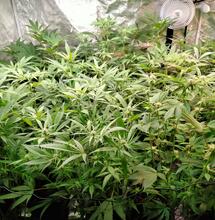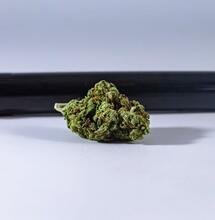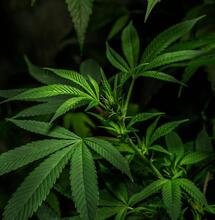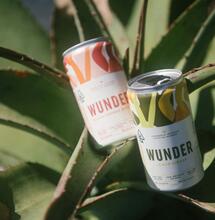The Difference with Hydro Growing
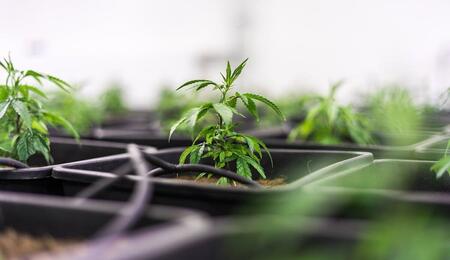
The most natural way to grow cannabis is in soil, but there are also other ways to cultivate your herbal medicine. Hydro growing allows for more precise nutrient feeding and shortened time for plants to develop, with potentially more bud sites to harvest. Choosing whether to go with standard growing in soil or with hydro growing would depend on your specific needs and the goals you want to achieve. When you know what you want in a cannabis garden you can decide for the grow medium that best works for you.
There are several different ways you can grow cannabis, but most of the time it comes down to whether you choose to grow plants in soil or perhaps set up a hydroponic system. Both methods are good and have their strengths. What each method requires is separate management practice and different equipment to handle pot plants from seedling to flowering.
Some growers who prefer “normal” growing in soil disregard hydro growing as an unnatural way of cultivating weed, and incapable of maximizing the yields. However, that’s not quite the case. Both grow methods can generate amazing results when the job is done properly.
A good end product depends on optimal environment conditions for the strain that’s being grown, regular nutrition, correct light schedule, and selection of high-quality cultivars.
Hydro Growing vs. the Usual Soil Cannabis Growing
It’s good to know the differences between soil and hydro growing regardless if you’re a novice into this business or behind you are many years of experience. Both techniques can lead to excellent results and yields, but they differ significantly especially in the part with nutrient feeding and the equipment required for setting up the grow room. With the equipment also come different management skills required to cultivate the plants. Below, let’s take a look at the most important things you need to know about hydro growing and what makes it different from growing in soil.
The Growing Medium
The major difference with hydro growing is the grow medium. When working with soil, germinated seeds can be sown directly into a pot to start growing. With hydro systems, growers can choose to plant seeds for example in rockwool cubes that are placed into net pots, which are then inserted into hydroponic settings.
While hydro plants can remain in the same net pot and hydroponic system for the duration of the entire growth cycle, soil plants may require transplanting several times over, from smaller to larger containers as needed, with a main purpose to provide more room for the roots to spread.
Nutrient Feeding
In soil growing, the roots of cannabis plants reach out for food and nutrients available in the ground. In contrast, hydroponic plants have roots that float into water or air, getting the needed nutrients via liquid solutions which can be administered constantly or at certain intervals of time.
Soil growing relies on the soil as the nutrient reservoir. Roots absorb macro- and micronutrients through the process of nutrient diffusion. The organic matter added in the soil takes time to degrade and uses soil organisms to help unlock the nutrients available in the organic feed. Although, sometimes soil growers would want to use readily available bottled formulas so that the plants can absorb the nutrients immediately, especially if they see that the plant is struggling.
In hydro growing, water is the main medium through which the nutrients travel to the roots. Rockwool, coco coir, and clay pebbles are some of the most common substrates used by hydro growers. Plants also need structural support in the area between the roots and stem to keep them in a fixed vertical position in their net pots. In this setting, the roots of cannabis are constantly or periodically exposed to a nutrient solution which contains all the necessary nutrients required to grow a vigorous plant.
Whether the roots have continual exposure to nutrients or not would depend on the type of hydro system used. For example, in Deep Water Culture (DWC), which is considered by many the optimal hydroponic technique, the net pots hold the plants over a deep reservoir of oxygen-rich nutrient formula. Submerged in that solution, the roots have continued access to food, water, and oxygen.
It’s slightly different in an ebb and flow hydroponic setup, however. Plants in this type of hydro system are placed in pots filled with perlite, coconut coir or soil, and are set in ebb and flow trays or containers. The system would periodically flood and drain the plant roots with a nutrient solution. This setting allows the roots to breathe in between each feed.

Organic Feeds and Liquid Formulas
Whether it’s grown in soil or hydro, cannabis has to receive the same macronutrients and micronutrients. What differs is the form in which these nutrients are made accessible to the plants.
Soil growers can proceed with organic feeds only, such as compost, compost tea, manure, bone and fish meals, kelp and molasses, and other types of natural fertilizers. This is a slower way to feed plants, since organic matter takes time to break down and release valuable nutrient compounds. It’s also essential that growing is conducted in fertile soils. If the soil is poor quality, using synthetic fertilizers would be necessary to speed up the feeding process for the plant, enrich the soil, and thus avoid malnourishing.
Nevertheless, these days it’s much easier to go with veg and flowering liquid formulas or powdered nutrients that are available to the plants right away. These solutions are typically added to the plants according to a specific schedule.
Liquid formulas containing the optimal amounts of macro and micronutrients are the most common way to feed also in hydro growing. One of the most beautiful things about hydro growing probably is that you cannot go wrong with the doses. Soil feeding can sometimes result with excess or lack of administered nutrients, but this is highly unlikely in hydroponics.
How the nutrient compounds are distributed to the hydroponic plants would further depend on the system. Kratky is the most common hydro system and the simplest one to use. Kratky only uses one container where all the nutrients are added, and that’s pretty much about it.
In DWC settings, growers need to pour the nutrients in an external reservoir. From there the nutrients travel to the plants through a pipe grid.
Costs, Space and Difficulty Growing with Hydro
If you are just starting your journey as a cannabis grower, the recommended way to begin with is with soil. A pre-requisite is to use high-quality soil mix which by default eases the nutrient feeding process through all stages of growth. This way of growing is also good to get familiar in general with the entire cannabis cultivation process.
The Kratky method and DWC are the go-to methods for beginner hydro growers. These systems are relatively easy to install, convenient to use, and do not require a lot of space. Feeding is easy as all you need is bottled liquid solutions.
However, hydro growing demands higher initial investment. So, it’s probably unwise to purchase equipment if you don’t intend on growing cannabis regularly.
Every grow operation needs sufficient space to install all the equipment. Kratky systems would work best for small grow rooms, but it might be a problem for larger hydro systems if the space you have is limited.
Setting up a more advanced hydro system would require a larger room where you can place external reservoirs. That’s an extra space that you likely won’t need if you grow plants the normal way with soil.
Speed of Growing, Harvest and Quality of Colas
Hydroponic cannabis plants typically have faster onset for grow and can yield more than soil-grown ones. That primarily owes to the use of liquid formulas and that the roots of hydro plants have regular access to those nutrients. Plants progress quickly during the vegetation phase and have more opportunity to form a larger number of bud sites.
Therefore, if you are really looking forward to speedy growing of cannabis, hydro growing might be the answer, it might be the right call to make. Though, you can always use autoflower cultivars which anyway grow faster regardless where you pot them.
But here’s what can make the difference. If you for example grow autoflower cannabis in small pots with soil, they are likely to produce less buds than if they are put into a larger hydro setting. Or, if you have a small hydro setting, such as Kratky, it’s likely to produce smaller colas than a plant grown in a big pot or outdoors in rich organic soil.
Plant genetics are equally important for good yields. When you select a cultivar that tends to naturally produce numerous bud sites, it will produce them in both hydro and soil growing. Genetics combined with good management would determine how big colas your plants produce, and it would not matter so much if the growing medium is hydroponics or soil. What matters is your skills and whether you tend to the plants in a way that suits them.
Finally, when it comes to harvesting, there are not any significant differences. Both wet and dry trimming are fine for hydro and soil plants. And after that, don’t forget to cure the buds properly.
Happy Growing!
Also read on Soft Secrets:
- A Beginner’s Guide to Hydroponics
